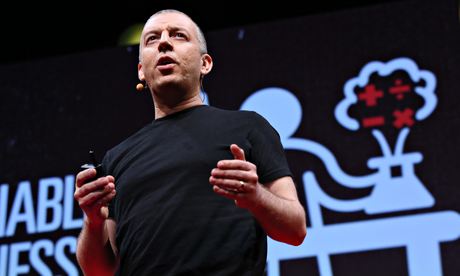
There are around 127,000 people in the UK with the incurable disease known as Parkinson's. It's likely you'll know someone who has it. I do – my friend Jan Stripling, who used to be a virtuoso ballet dancer. Like many people, I would like to personally aid research into curing Parkinson's.
I've been analysing the human voice from a mathematical perspective since 2003. It wasn't until a few years later that my research took me to understanding the impact of Parkinson's and how the voice can play a crucial role in the disorder.
The current objective symptom tests for Parkinson's are still expensive, time-consuming and logistically difficult, and as a result are rarely undertaken outside of trials. But the physical motor tremors of Parkinson's affect the vocal folds in similar ways to the rest of the body, so we invested time and effort into developing a technology to test for symptoms using voice recordings alone.
My team and I embarked on developing a set of computer algorithms that analyse fluctuations, tremors and other symptoms in recordings of the human voice. When comparing samples of Parkinson's sufferers and healthy individuals, the system can effectively detect the presence of symptoms associated with the disease. It was crucial to ensure our test had the lowest barrier to entry for our users, so the telephone was our choice of sample-collecting device.
Laying the groundwork for research
What we're seeking to do is lay the groundwork for a new way of doing medical research that makes our ambitions of better treatment and diagnosis possible. By partnering with cloud communications company Twilio, whose service makes it possible to programmatically make, receive, and record phone calls through its web service APIs, we developed a system where people with Parkinson's can call a dedicated number that records their voice. After a brief recorded prompt, participants are asked to submit around 20-30 seconds of steady 'ahhh' voice recording.
Twilio sends this data to our programmable PHP-based platform, which collects, analyses and stores the recordings. Our initiative then collates and contrasts this voice data with self-reported symptom data provided by health-focused social network PatientsLikeMe, to verify symptom predictions based on the recordings.
We then share the collected data with scientists who can help to analyse it. This is where Sage Bionetworks comes in. Its platform allows analysts to share efforts to try to extract useful information. The challenge is to use the voice recordings to predict Parkinson's symptom severity by applying sophisticated algorithms, which seek to replicate the predictions made by a neurological expert.
This combined effort – which makes up the Patient Voice Analysis project – follows our hugely successful Parkinson's Voice Initiative. During that project we recorded voices from around 17,000 people, those with Parkinson's and without, in less than six months. We were able to get sufficient voice data that we can now rigorously test scientific hypotheses. Perhaps more importantly, we could get this data very quickly, and on a shoestring budget. Projects with this number of participants can cost millions, whereas this project cost less than $1,000.
In the Patient Voice Analysis project we want to try to do something more ambitious: use the phone to accurately measure symptom severity. Again the project has had a great response – in less than one month, more than 800 individuals with Parkinson's called up the Twilio number and filled out a symptom report questionnaire on PatientsLikeMe. This is a fantastic set of high-quality scientific data to share with the research community.
Next steps for management of Parkinson's?
Our next project will focus on recording data from smartphones – these are packed with digital sensors – they can continuously measure body motion on a second-by-second basis. As with voice data, previous research has shown that you can accurately detect Parkinson's just using this smartphone sensor data. If successful, it might mean several steps forwards for the science and management of Parkinson's. It could reduce the need to visit the clinic for checkups: people could use their smartphones instead.
Perhaps more important is the impact this could have on the search for new treatments. One obstacle when pursuing new drugs is the cost and logistical difficulty of bringing large numbers of recruits into the clinic to get sufficient scientific data. If all that's needed is for a participant to place a smartphone in their pocket for a week, then it becomes feasible to run trials on a massive scale.
Technology's aid in opening up research
If scientists can provide a simple, quick, anonymous and effortless way for people to participate in their scientific research projects, people will join in. If we share the data freely, we can pool the diverse talent and broad knowledge of many researchers, hugely increasing the chances that each study will be a success.
Dr Max Little is an applied mathematician who works on algorithms and technologies for remote, non-invasive methods for measuring and quantifying diseases such as Parkinson's
Get more articles like this sent direct to your inbox by signing up for free membership to the Guardian Media Network – this content is brought to you by Guardian Professional.

